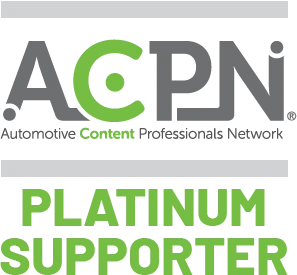The deadline to legally comply with SCIP compliance is approaching. From 5th January 2021, businesses that supply articles or complex objects (products) containing certain hazardous substances will have to submit information to a new database established by the European Chemicals Agency (ECHA). The supply articles here refer to those which contain Candidate List substances in a concentration above 0.1% w/w. The stakeholders are EU producers, importers, assemblers, and distributors who place articles on the EU market.
‘The start of a new era for waste treatment operators’ – This is how ECHA had recently referred to the SCIP database. The aforementioned statement also reflects how much importance the database carries and further stresses on the critical need for waste management in the 21st century.
The information generated will help waste operators in the separating, treating, and recycling of waste materials.
ECHA also strongly believes that only by being transparent with the hazardous substances in products, customers would be able to make well-informed decisions when purchasing, using and disposing of products.
European Commission Green Deal
As part of the European Commission’s Green Deal released December 2019 the Commission will present a chemicals strategy for sustainability by Summer 2020. The Commission will also review how to move towards a process of ‘one substance – one assessment’ and to provide greater transparency when prioritizing action to deal with chemicals
Let’s take a predictive look at how ECHA SCIP will be viewed in the future after Jan 5, 2021
1. Sustainable Future
SCIP database will help ECHA and EU to bring a more sustainable tomorrow into the global world. The SCIP database will act as a global role model for improving human health and the environment. The current plight of environment highly mandates the need for more research into waste management methodologies.
2. Offer Precise Solutions
SCIP compliance will act as a reliable partner to the world while offering stability and the currency of trust in the form of a further enhanced waste management database. The database will also help Europe offer solutions in a complex world.
3. EU Chemicals Legislation Finder
ECHA is expected to launch its new legislation finder service which will provide a central access point to find information on numerous EU laws covering chemicals. ECHA will initially start publishing data on 40 pieces of EU legislation. The service is expected to be helpful to industry and also the European Commission and national authorities to help them identify substances for which there may be regulatory overlaps or gaps.
4. Legal Issues
In a letter to European Commission DGs Environment and Grow, trade body SMEUnited says ECHA could be asking for information beyond legal requirements. This is a part of the submission process that the other stakeholders too, have raised as a concern during the development of the database. And due to these “ongoing legal and practical discussions, ECHA SCIP database is expected to have “continuous adaptations” through time.
5. Trouble with Resources
The letter also pointed out that SMEs do not have the resources to regularly implement adaptations which will make the updates highly problematic for them. Such issues with resource management are likely to bring down the total number of submissions from the companies, which will further lead to more complexities in the form of regulatory fines, legal notices, etc.
6. Brexit
The future outlook of any compliance is incomplete without discussing the impact of Brexit. Post England’s exit from the European Union, a transition period will run until 31st December 2020. During the transition period market access will continue on the current terms with REACH and SCIP still continuing to be applicable in the UK. Some tips to help you achieve REACH compliance. If not already, companies which do business in the UK and/or part of their supply chain involving the UK should consider the impacts and ensure appropriate steps are taken to minimize any supply chain disruption. We have captured the differences between REACH and SCIP database here.
SCIP is regarded as a massive endeavor by the EU to create a circular economy that reduces the number of substances of very high concern (SVHC), forces companies to innovate as opposed to creating alternatives based on the very same SVHC family they were using and, above all, repurposes and recycles materials that end up in the waste stream.
Wrapping Up
The core mechanism behind this endeavor is the SCIP database. Unlike the REACH regulation which only required companies to submit information on SVHCs found within finished products or products as sold—and which was selectively enforced by EU member states—SCIP follows the logic of “once an article, always an article.This logic increases the regulatory burden for the companies a lot. Instead of asking one supplier about one product, companies in scope — including everyone who sells or imports into the EU market, must scour their entire supply chain for any SVHCs found in any components that go into any product they manufacture, distribute or sell.
That’s why APA Engineering always recommends prioritizing your regulatory compliance-related activities and play safe. We have helped numerous organizations in successfully meeting their compliance requirements and would love to hear from you and assist you as well. Get in touch with our experts to find solutions pertaining to your concerned compliances and regulations today!
If this regulation is applicable to you and you are interested in knowing more about this topic and available solutions, then schedule a free consult with our experts.

